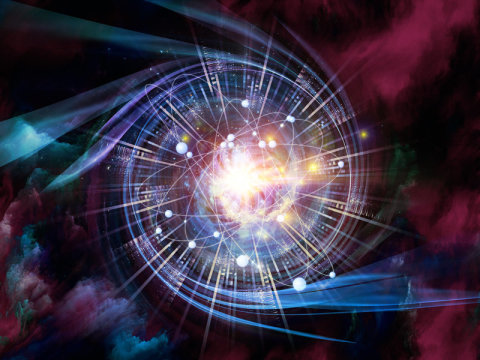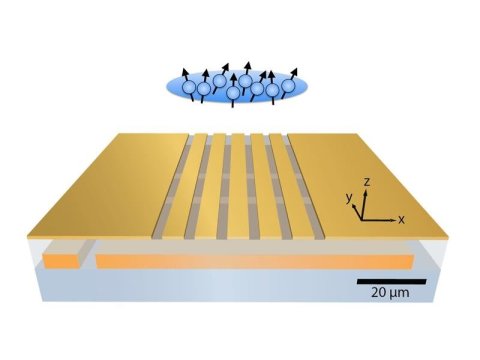

IS IT POSSIBLE?
Astrophysics, Quantum Physics & The Nature of Reality

Embrace Foundation Retreat Center
Embrace.Foundation (skype messaging) - 011+1+212.675.4500 (New York)
Click to Email Us
Embrace Foundation is a non-profit,
educational foundation set up to create
better understanding between people of
different religions, cultures, traditions and
world philosophies.
Embrace Foundation works to bring leaders
and scholars of world-wide religions,
cultures and philosophies together by
sponsoring forums, seminars, lectures and
developing an international exchange
program. Embrace Foundation is particularly
concerned with reaching the world public
through the media.
Purpose

Donations
Embrace Foundation is an all volunteer
organization. All donations go directly to
programs.
Embrace Foundation does not and has
never given permission to any outside
organization to solicit or receive
contributions on our behalf.
All donations should be made to Embrace
Foundation only via Paypal or by mail. All
donations are tax deductible. A receipt will
be emailed to you. Please click on the Pay
Pal link below to Donate.

Embrace Humanity

Thank you for making a donation.
The universe's primordial soup flowing at CERN
SCIENCE DAILY
Date: February 9, 2016
Source: University of Copenhagen - Niels Bohr Institute
SCIENCE DAILY
Date: February 9, 2016
Source: University of Copenhagen - Niels Bohr Institute

The figure shows how a small, elongated drop of quark-
gluon plasma is formed when two atomic nuclei hit each
other a bit off center. The angular distribution of the emitted
particles makes it possible to determine the properties of
the quark-gluon plasma, including the viscosity.
Credit: State University of New York
Researchers have recreated the universe's primordial soup in miniature format by colliding lead atoms with
extremely high energy in the 27 km long particle accelerator, the LHC at CERN in Geneva. The primordial soup
is a so-called quark-gluon plasma and researchers from the Niels Bohr Institute, among others, have measured
its liquid properties with great accuracy at the LHC's top energy. The results have been submitted to Physical
Review Letters.
A few billionths of a second after the Big Bang, the universe was made up of a kind of extremely hot and dense primordial
soup of the most fundamental particles, especially quarks and gluons. This state is called quark-gluon plasma. By colliding
lead nuclei at a record-high energy of 5.02 TeV in the world's most powerful particle accelerator, the 27 km long Large
Hadron Collider, LHC at CERN in Geneva, it has been possible to recreate this state in the ALICE experiment's detector
and measure its properties.
"The analyses of the collisions make it possible, for the first time, to measure the precise characteristics of a quark-gluon
plasma at the highest energy ever and to determine how it flows," explains You Zhou, who is a postdoc in the ALICE
research group at the Niels Bohr Institute. You Zhou, together with a small, fast-working team of international collaboration
partners, led the analysis of the new data and measured how the quark-gluon plasma flows and fluctuates after it is formed
by the collisions between lead ions.
Advanced methods of measurement
The focus has been on the quark-gluon plasma's collective properties, which show that this state of matter behaves more
like a liquid than a gas, even at the very highest energy densities. The new measurements, which uses new methods to
study the correlation between many particles, make it possible to determine the viscosity of this exotic fluid with great
precision.
You Zhou explains that the experimental method is very advanced and is based on the fact that when two spherical atomic
nuclei are shot at each other and hit each other a bit off center, a quark-gluon plasma is formed with a slightly elongated
shape somewhat like an American football. This means that the pressure difference between the centre of this extremely
hot 'droplet' and the surface varies along the different axes. The pressure differential drives the expansion and flow and
consequently one can measure a characteristic variation in the number of particles produced in the collisions as a function
of the angle.
Mapping the primordial soup
"It is remarkable that we are able to carry out such detailed measurements on a drop of 'early universe', that only has a
radius of about one millionth of a billionth of a meter. The results are fully consistent with the physical laws of
hydrodynamics, i.e. the theory of flowing liquids and it shows that the quark-gluon plasma behaves like a fluid. It is however
a very special liquid, as it does not consist of molecules like water, but of the fundamental particles quarks and gluons,"
explains Jens Jørgen Gaardhøje, professor and head of the ALICE group at the Niels Bohr Institute at the University of
Copenhagen.
Jens Jørgen Gaardhøje adds that they are now in the process of mapping this state with ever increasing precision -- and
even further back in time.
Story Source:
The above post is reprinted from materials provided by University of Copenhagen - Niels Bohr Institute. Note: Materials
may be edited for content and length.
Atoms placed precisely in silicon can act as quantum simulator
Date: April 22nd. 2016
Source: University of New South Wales
"Previously this kind of exact quantum simulation could not be performed without interference from the environment, which
typically destroys the quantum state," says senior author Professor Sven Rogge, Head of the UNSW School of Physics
and program manager with the ARC Centre of Excellence for Quantum Computation and Communication Technology
(CQC2T).
"Our success provides a route to developing new ways to test fundamental aspects of quantum physics and to design
new, exotic materials -- problems that would be impossible to solve even using today's fastest supercomputers."
The study is published in the journal Nature Communications. The lead author was UNSW's Dr Joe Salfi and the team
included CQC2T director Professor Michelle Simmons, other CQC2T researchers from UNSW and the University of
Melbourne, as well as researchers from Purdue University in the US.
Two dopant atoms of boron only a few nanometres from each other in a silicon crystal were studied. They behaved like
valence bonds, the "glue" that holds matter together when atoms with unpaired electrons in their outer orbitals overlap and
bond.
The team's major advance was in being able to directly measure the electron "clouds" around the atoms and the energy of
the interactions of the spin, or tiny magnetic orientation, of these electrons.
They were also able to correlate the interference patterns from the electrons, due to their wave-like nature, with their
entanglement, or mutual dependence on each other for their properties.
"The behaviour of the electrons in the silicon chip matched the behaviour of electrons described in one of the most
important theoretical models of materials that scientists rely on, called the Hubbard model," says Dr Salfi.
"This model describes the unusual interactions of electrons due to their wave-like properties and spins. And on of its main
applications is to understand how electrons in a grid flow without resistance, even though they repel each other," he says.
The team also made a counterintuitive find -- that the entanglement of the electrons in the silicon chip increased the further
they were apart.
"This demonstrates a weird behaviour that is typical of quantum systems," says Professor Rogge.
"Our normal expectation is that increasing the distance between two objects will make them less, not more, dependent on
each other.
"By making a larger set of dopant atoms in a grid in a silicon chip we could realise a vision first proposed in the 1980s by
the physicist Richard Feynman of a quantum system that can simulate nature and help us understand it better," he says.
The publication of this latest advance towards the development of a silicon-based quantum computer at UNSW coincided
with the opening of the university's new quantum computing laboratories by Australian Prime Minister Malcolm Turnbull.
Story Source:
The above post is reprinted from materials provided by University of New South Wales. Note: Materials may be edited for content and
length.
The atom without properties
Date: April 21st. 2016
Source: University of Basel
Everyday objects possess properties independently of each other and regardless of whether we observe them or not.
Einstein famously asked whether the moon still exists if no one is there to look at it; we answer with a resounding yes. This
apparent certainty does not exist in the realm of small particles. The location, speed or magnetic moment of an atom can
be entirely indeterminate and yet still depend greatly on the measurements of other distant atoms.
Experimental test of Bell correlations
With the (false) assumption that atoms possess their properties independently of measurements and independently of
each other, a so-called Bell inequality can be derived. If it is violated by the results of an experiment, it follows that the
properties of the atoms must be interdependent. This is described as Bell correlations between atoms, which also imply
that each atom takes on its properties only at the moment of the measurement. Before the measurement, these properties
are not only unknown -- they do not even exist.
A team of researchers led by professors Nicolas Sangouard and Philipp Treutlein from the University of Basel, along with
colleagues from Singapore, have now observed these Bell correlations for the first time in a relatively large system,
specifically among 480 atoms in a Bose-Einstein condensate. Earlier experiments showed Bell correlations with a
maximum of four light particles or 14 atoms. The results mean that these peculiar quantum effects may also play a role in
larger systems.
Large number of interacting particles
In order to observe Bell correlations in systems consisting of many particles, the researchers first had to develop a new
method that does not require measuring each particle individually -- which would require a level of control beyond what is
currently possible. The team succeeded in this task with the help of a Bell inequality that was only recently discovered. The
Basel researchers tested their method in the lab with small clouds of ultracold atoms cooled with laser light down to a few
billionths of a degree above absolute zero. The atoms in the cloud constantly collide, causing their magnetic moments to
become slowly entangled. When this entanglement reaches a certain magnitude, Bell correlations can be detected. Author
Roman Schmied explains: "One would expect that random collisions simply cause disorder. Instead, the quantum-
mechanical properties become entangled so strongly that they violate classical statistics."
More specifically, each atom is first brought into a quantum superposition of two states. After the atoms have become
entangled through collisions, researchers count how many of the atoms are actually in each of the two states. This division
varies randomly between trials. If these variations fall below a certain threshold, it appears as if the atoms have 'agreed' on
their measurement results; this agreement describes precisely the Bell correlations.
New scientific territory
The work presented, which was funded by the National Centre of Competence in Research Quantum Science and
Technology (NCCR QSIT), may open up new possibilities in quantum technology; for example, for generating random
numbers or for quantum-secure data transmission. New prospects in basic research open up as well: "Bell correlations in
many-particle systems are a largely unexplored field with many open questions -- we are entering uncharted territory with
our experiments," says Philipp Treutlein.
Story Source:
The above post is reprinted from materials provided by University of Basel. Note: Materials may be edited for content and length.

In a proof-of-principle experiment, researchers at UNSW
Australia have demonstrated that a small group of individual
atoms placed very precisely in silicon can act as a quantum
simulator, mimicking nature -- in this case, the weird quantum
interactions of electrons in materials.
Atom abstraction. (stock image)
Credit: © agsandrew / Fotolia

The microscopic world is governed by the rules of quantum
mechanics, where the properties of a particle can be completely
undetermined and yet strongly correlated with those of other
particles. Physicists from the University of Basel have observed
these so-called Bell correlations for the first time between
hundreds of atoms. Their findings are published in the scientific
journal Science.
A microchip is used to trap a cloud of ultracold atoms and to entangle
the atoms' magnetic moments.
Credit: Illustration: University of Basel, Department of Physics

